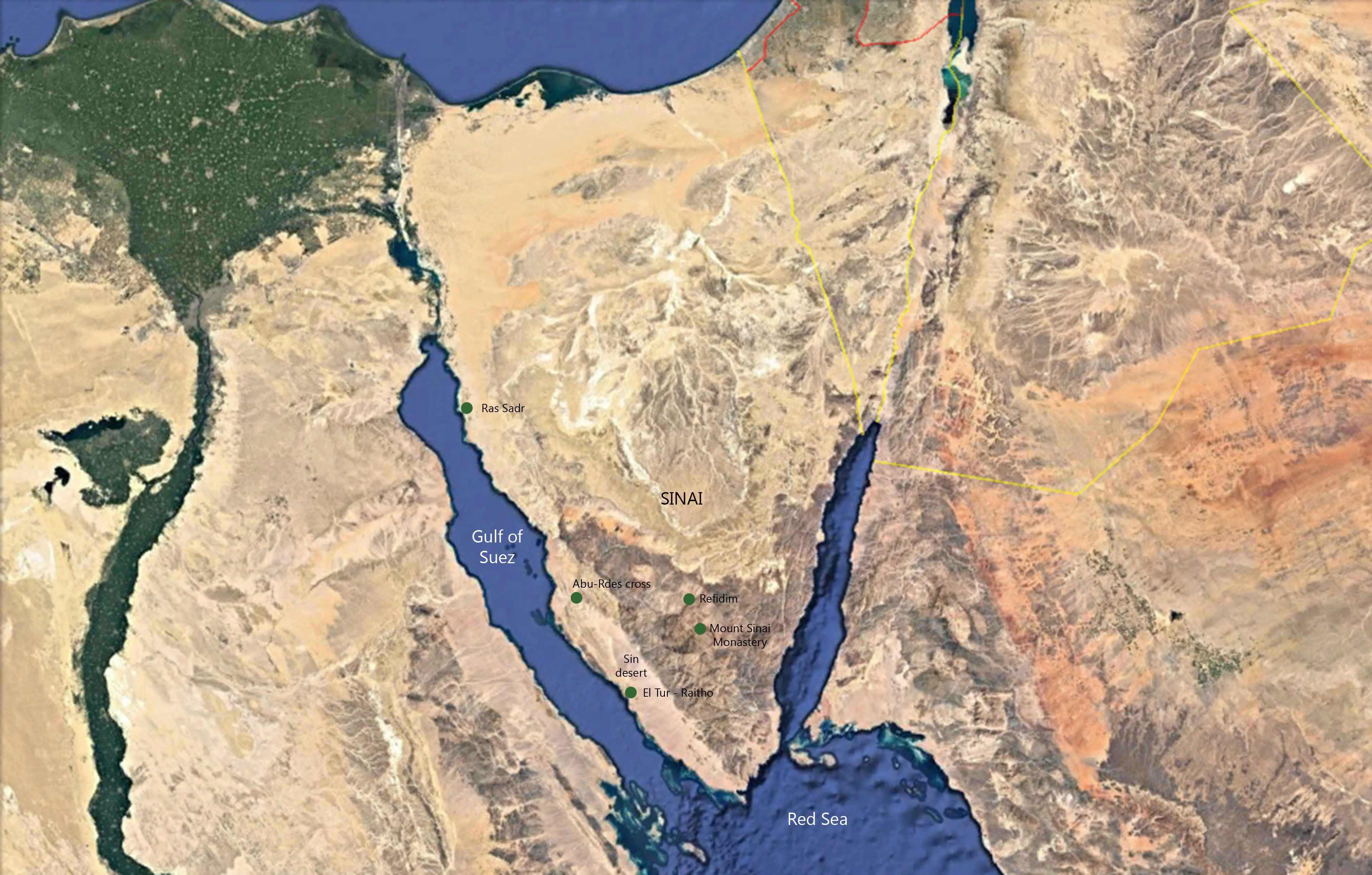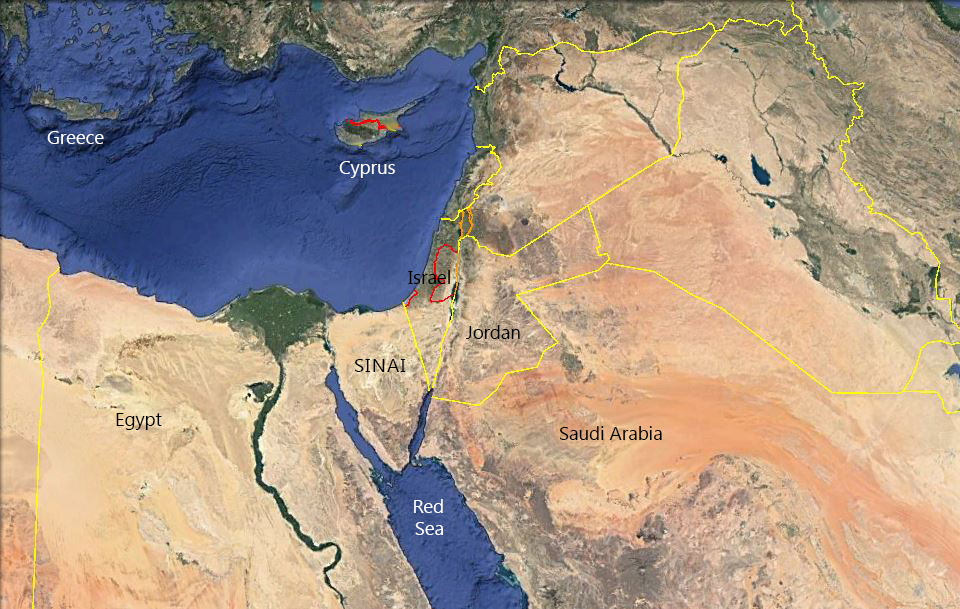THE SINAI PENINSULA
The word Sinai has been variously derived from the Semitic word sen, meaning “tooth”, in reference to the numerous mountain peaks of the area, or to the word sin, the goddess of the moon venerated in prehistoric times. Diodorus Siculus derives the name of Mount Serbal, in the area of Pharan, from the name of Baal. Jethro, the priest of Median, worshiped el-Elyon, God Most High.

The Sinai peninsula is a triangular wedge of some twenty-four thousand square miles, forming a bridge between Asia and Africa. It is bounded by the Mediterranean to the north, the Red Sea to the west, and the Gulf of Aqaba to the east. Throughout history, the Sinai peninsula has been one of the most important crossroads because of its strategic position linking east with west, and north with south.
The peninsula’s broad northern part is composed of flat expanses of sand. Its central part consists of a large calcareous plateau called the el-Tih region. A moonscape of granite mountains covers the southernmost triangle. This desert land is unsuitable for tilling, as there is little rainfall and natural water sources are scarce, while the pronounced variations in temperature between night and day have only allowed a few nomads to eke out a living. At the same time, the area is characterized by its diverse fauna and rare flora. In more recent times, the resources of the area have been developed, and the population has increased. Programs have been instituted for the protection of the fragile native ecosystem, in the midst of this increase in the native population, and the number of visitors to the area.
At the heart of the South Sinai is the Holy Monastery of Saint Catherine, guardian of a spiritual and cultural presence extending back over eighteen centuries. As of old, the monastery attracts pilgrims and visitors from all over the world, and strives to continue its age-old ministry under these recent very changed circumstances.





